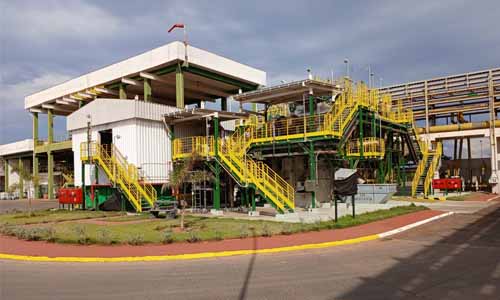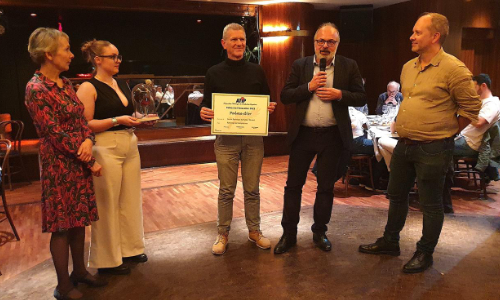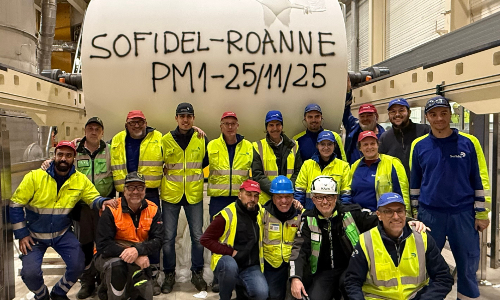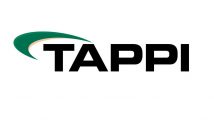
Consulting firm EMGE has just released its view on the impact of UPM’s recent mill closures on the graphic paper market. See below.
UPM have just announced a coated mechanical paper machine closure at Kaukas (Finland), following the closure of Kabel’s coated paper production in Germany earlier this year.
Here’s a redacted statement from UPM on the issue:
“Driven by structural overcapacity in the graphic paper markets and the need to ensure long-term competitiveness of its operations, UPM Communication Papers plans to end paper production at UPM Kaukas paper mill, reducing the annual production capacity of coated mechanical paper by 300,000 tonnes. The shutdown of the PM 1 is planned for the end of 2025. UPM’s pulp, sawn timber and biofuels production and R&D activities at UPM Kaukas integrate will continue as before. Should the plans be implemented the number of employees affected at UPM Kaukas paper mill is estimated at 220. With the plan to shift UPM’s coated mechanical paper production in Finland from Kaukas to our Rauma mill, we are striving to optimize the asset structure and improve cost efficiency, particularly in our production and logistics processes”.
This LWC capacity outage in Finland at the end of the current year, represents around 17% of total W. European production capacity (1.8mt).
Below are the latest European data for June:
European Graphic Papers:
| June-2025 (3mma) | Demand | Op Rate |
| Newsprint | -8% | 86% |
| SC/UM | -10% | 71% |
| Coated Mechanical/LWC | -13% | 65% |
| WF Papers | -9% | 75% |
| Total Graphic Papers | -10% | 74% |
So based on the latest three months data in the table above, this closure would raise LWC operating rates from 65% to around 82%; but it won’t of course happen until the end of the year, by which time, demand will most probably have fallen further (that’s our forecast, at least!); therefore, unless there is additional LWC capacity management in W. Europe before the end of 2025, the actual operating rate at the start of 2026 is most likely to fall below 80% still. The worry is then that, as the year progresses, the over-capacity worsens, which combined with the SC magazine situation – as well as in other publication papers – makes the situation continually precarious for mills; effectively caught between a rock (falling demand/low operating rates) and a hard place (often high or rising costs).
If you’ve not yet seen EMGE’s views on demand-supply and price forecasts, please see WGP and QPF.
In other mill news, we’ve recently learnt that SAPPI and Norske Skog have started producing Uncoated Mechanical (UM) Book paper grades at their mills in Kirkniemi (Finland) and Skogn (Norway), respectively, thus further diversifying their subgrade paper offering to mitigate against the fall in their more traditional paper grade production capabilities.
On a separate note, but something that will affect some mills, agents and printers in the PW paper sector, the UK’s government tax department, known locally as HMRC (Her Majesty’s Revenue and Customs) has launched a new “Transformation Roadmap” towards digital/AI and away from paper for its PAYE (Pay As You Earn) service – so covering pretty much anyone that pays income tax (it states approx. 35 million taxpayers)! Its own estimates are for a £50m saving and it also states that 90% of current interactions are already digital. HMRC said that paper post provision will remain “for critical correspondence and for the digitally excluded”. Another blow for paper…
When we talk about continuing uncertainly for pulp and paper in the months and years ahead, we have to place that in the context of massive global instability worldwide; one guide to economic uncertainty is the price of gold (/ounce); following the 2008-09 financial crisis, the price of gold rose from below US$500/oz to nearly US$2000/oz (2011-2013).
After several years oscillating between $1,200-1,300/oz, it started rising just before Covid (2019) and peaked below $2,000/oz between August 2020 and November 2023.
Since the last conflict erupted in the Middle East, the price has rapidly climbed to nearly US$3,500 in recent weeks!































